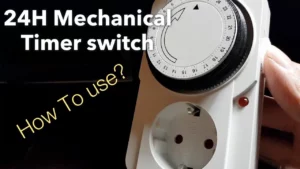Are you working with time relays in your industry? If you are, it’s important to test them to make sure they are working correctly. But how do you do that?
In today’s post, we will guide you on how to test timer relays to ensure optimal performance in diverse industrial applications. Whether you’re dealing with timing relays or timer relay switches, this guide will empower you to maintain peak efficiency in your operations.
Testing Procedure for Timer Relays
Ensuring the accuracy and reliability of timer relays is important. Follow these steps to conduct a comprehensive test:
1. Begin by visually inspecting the timer relay for any signs of physical damage, loose connections, or burnt components. A thorough examination sets the foundation for a successful testing process.
2. Verify that the input power matches the specifications outlined in the product manual. Inaccurate power input can lead to improper functioning of the timer relay.
3. Initiate a functionality test by manually adjusting the timer relay settings. Observe whether the relay accurately activates and deactivates according to the set time intervals. This step helps identify any issues with the internal mechanism.
4. Employ a reliable timing device to measure the actual time intervals against the preset values. This step ensures that the timer relay maintains precise timing, crucial for synchronized industrial processes.
5. Consider external factors such as temperature, humidity, and vibration. Timer relays must withstand various environmental conditions, so testing them under different scenarios helps assess their resilience.
6. Connect the timer relay to a simulated load or the actual load it will control in real-world applications. Confirm that the relay can handle the load capacity and trigger the connected devices accurately.
7. Perform the testing procedure multiple times to ensure consistency and reliability over extended periods. This step is crucial for identifying any potential issues that may arise with prolonged usage.
Commitment to Precision
By following these comprehensive testing procedures, you can guarantee that your timed relays, timing relays, or timer relay switches meet quality standards. Our commitment to precision and reliability ensures that your industrial processes operate seamlessly.
If you’re ready to elevate your industrial processes, contact us today or download our e-catalog.









